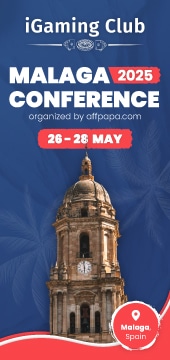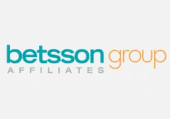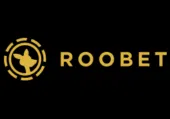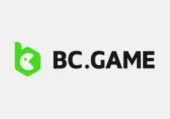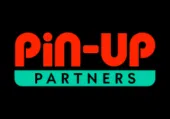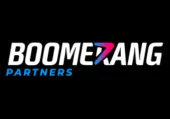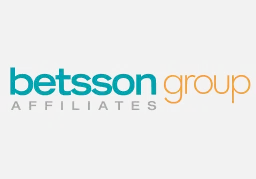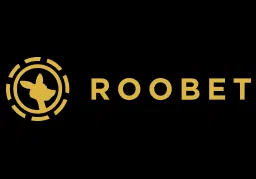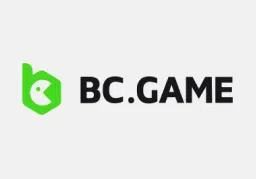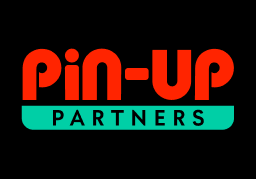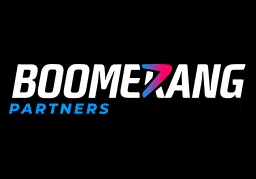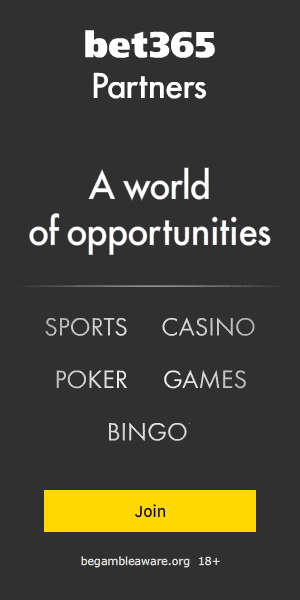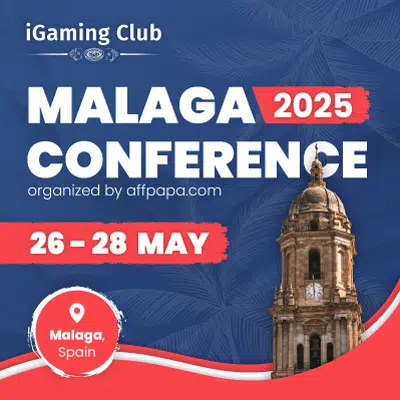Ending the SEO vs PPC Battle: What Works Best in iGaming?
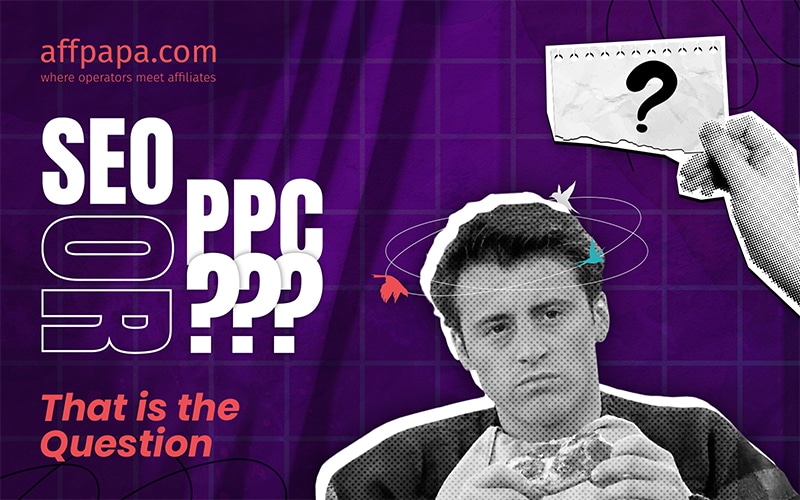
SEO vs PPC is an ongoing battle. The real winner? The one who knows how to use both. JOEY DOESN’T SHARE STRATEGIES! (Friends fans, you get it.) But we do!
Success is not a matter of luck; it’s a matter of strategy, especially when choosing between SEO vs PPC. That’s something big companies like 1XBET and Bet365 know well – and with the correct plan, your brand might be next. Rest assured, as AffPapa is here to help you develop it.
To determine what suits you best, we first need to look through the top tactics that prove to get the job done. So let’s dive straight into SEO vs PPC/CPC.
Table of Contents
- Understanding SEO and PPC Strategies in the Real Game
- What is iGaming SEO?
- On-Page SEO for iGaming
- Technical SEO for iGaming
- Off-Page SEO for iGaming
- What is iGaming PPC (CPC)?
- Types of PPC Campaigns
- Essential PPC Optimization Elements
- What is the Difference Between SEO and PPC?
- SEO Strategy in the Real World
- PPC Strategy in the Real World
- SEO vs PPC Showdown
- Why Should You Combine SEO and PPC for Better Results?
- SEO Strategies Combined with PPC Work Better for iGaming in 2025
- Conclusion
Understanding SEO and PPC Strategies in the Real Game
Before choosing your winning approach in the SEO vs PPC debate, respond to these: What is your spending limit? What resources do you need? Can you wait, or are you in for fast results?
Answering the above questions is the first step in making your SEO vs PPC decision. The second step is thinking like a marketer, not a businessman, so you can evaluate whether your SEO vs PPC specialist can successfully manage your campaign.
To do so, figure out which trends are currently working, analyze statistics, and identify what will be effective for both a short (within a year) and a long (beyond a year) time. If you don’t know where to start your research, you can use tools like Google Trends to find niche-specific patterns.
Now we can move on to exploring the first half of the SEO vs PPC equation – SEO!
What is iGaming SEO?
80% of digital leads come from Search Engine Optimization (SEO), a top aspect of online marketing. But what does it actually do? It helps businesses optimize their websites to rank higher on Google, Yandex, Bing, DuckDuckGo, Qwant, and other browsers. The higher you rank, the more visible your business is to potential customers. SEO involves improving your site’s structure, content, and technical elements to make it easier for search engines (and people) to understand. This boosts your credibility, gets you seen on the Search Engine Results Page (SERP), and ensures that your site is readable to both users and search engine bots. It takes effort to make a website easily readable, though.
But the toughest part of SEO is staying patient to manage through the first couple months, before SEO shows real results. All the same, be careful with the modifications, because if they’re “bad” you may get a penalty and stay at the bottom of search engines for months (or years if it’s too bad).
Generally, there are two main categories of SEO: on-page and off-page. However, as technical aspects become more important, many experts now consider SEO to have three main areas.
On-Page SEO for iGaming
On-page SEO is the optimization that happens directly on your website to improve search engine rankings. It includes:
Content Optimization
People don’t find your website accidentally (most of the time). Their intent is certain – to get answers to their questions. And if you want them coming, you need to have those answers. So to say, give your reader engaging, informational stuff. Keep in mind – the longer people stay on your webpage, the more relevant and trustworthy it will be for search engines, thus bringing it higher on the results page (SERP).
Infographics
Visual effects such as images, tables, and statistics shrink a lengthy text and make it more appealing. If all your information is visually dull, readers will flee out of sight. So, adding some visuals can potentially boost user engagement and also your SEO.
Keyword Optimization
Searching for appropriate keywords and organically integrating them into your material are key components of successful keyword optimization. This applies to both SEO vs PPC strategies, as keywords drive visibility in both. While being strategic, you should also concentrate on the intent of the customer. Add your primary keywords in the titles, headings, and descriptions to help browsers understand them and increase their visibility. Avoid typical mistakes, though, such as overstuffing your keywords, ignoring long-tail ones, or failing to match your keywords to user intent. Spread different keyword variations throughout your text to cover different search queries. This way, you’ll attract people without overusing a single expression.
UI/UX Design
A well-designed user interface (UI) is a main element for a positive user experience (UX), and with that, SEO. And by good design, we don’t mean only the visual side. It’s also the loading speed, mobile responsiveness, and easy navigation structure.
Heading Structure
The first thing readers notice while checking articles and posts is the headings (it’s called F-scanning, Google it). Having your headings in a proper hierarchy (H1, H2, H3, etc) organizes your texts, shows their interconnection, and makes them easy to skim through. Additionally, as we said before, using keywords in your headings will let search engines know that the content is relevant.
Internal Linking
Internal links help readers find further information on a certain topic and connect relevant material within a website. Furthermore, linking two pages shows search engines how valuable and relevant the linked page is. For instance, we provide you with general SEO material, but if you’d like to go deeper on “iGaming SEO Strategies”, you’d have to keep searching. However, providing you with a link to the information you already needed simplifies things for both you and us.
Anchor Texts
The clickable text in a hyperlink should be informative and relevant to the information it links to. Using generic phrases like “click here” is less effective than using keyword-rich, descriptive anchor texts, which provide context to both readers and search engines.
Website Localization
If you’re not targeting the whole world, localize for each market, even if it’s just one. It doesn’t mean just translating your website. Adapt its content, currency, and cultural references to suit the majority of your audience. For example, if you’re targeting 7 countries and 5 share similar traits, tailor content for that group. And if certain countries matter more for traffic, prioritize localizing for them. Smart localization boosts both user experience and SEO.
Technical SEO for iGaming
Technical SEO is enhancing your website’s backend for better indexing and performance. Here’s what you should check:
Site Speed & Core Web Vitals
A quick loading time is a key element for ranking (as it supports both SEO vs PPC efforts). According to Google, if a website takes more than 3 seconds to load, 53% of visitors will abandon it. The speed at which websites load is directly related to Core Web Vitals. First Input Delay (which calculates the time it takes for a page to react to the first user action), Cumulative Layout Shift (which looks for unexpected changes in content while a page loads), and Largest Contentful Paint (which counts the fastest loading time of the largest visible content) are the primary components of Core Web Vitals that should be considered․
Crawlability & Indexation
Information on your website is inspected (crawlability) and stored (indexation) in the index by browser bots. Polishing files, creating and submitting XML sitemaps, and using canonical tags to avoid duplicate content problems make it easier for bots to crawl and index. Believe us, when we say this is fundamental for ranking.
Title & Meta Description
The first things searchers see on the SERP are your title and meta description. To interest readers, these two should accurately summarize what they will read about, and for ranking, they should include relevant keywords.
Canonical Tags
Sometimes we have similar or duplicate variants of the same content, and canonical tags help indicate which one we prefer to be seen, and also combine them for SERP.
Open Graphs
How your posts appear on social media is controlled by these meta tags. Customize titles, images, and texts so your offers look good on any platform and provide better user interaction.
Website Caching
Storing cache or data reduces loading time for returning visitors. So use Server-Side Rendering (SSR), Client-Side Rendering (CSR), or hybrid methods to make users’ lives a bit easier. Also, the material is instantly available for engine bots to crawl, so SSR can offer better SEO and quicker first-page loads. After the initial load, CSR offers greater interaction and smoother transitions inside the software. For faster initial load time from SSR (which betters UX) and constant updates from CSR, try to use them both together.
Website Readability
Knowing whether your website works as intended or has problems using programming languages like Angular, React, and Vue.js is vital. TEST your site so it’s in its best shape for different devices and browsers.
Schema Markup
Search engines should be able to understand what your website is about, as we previously covered. That way, more people will see it. Schemas such as FAQ, Review, Organization, Local Business, Article, and others provide search engines with the information they need. You may evaluate your structured data using tools like Google’s Rich Results evaluate, and Schema.org can help you get started.
Image Alt Tags and Texts
Browsers can better understand the overall concept of images and their connection with your page by using alt tags – alternate texts for images. Descriptive alt text can improve image SEO and make material accessible to all users.
SSL Certificates
Google’s algorithm prefers valid websites, so you should use an SSL certificate (HTTPS) to secure your website as well as user data.
Off-Page SEO for iGaming
Off-page SEO includes the actions taken outside your website to influence its authority and relevance for search engines. It involves:
Link Building
This is still one of the most effective ranking techniques. Getting links from high-reputation sites can automatically enhance your own. Some well-known tactics include tiered link building (developing inbound links from various source levels), guest blogging (posting your material on another company’s website), and ABC link exchange (site A links to site B, site B to C, and C to A).
Social Share
That’s exactly what the name indicates – sharing stuff on your social accounts. While posting blogs, bonus offers, or game reviews on platforms like Meta (Facebook/Instagram), X (Twitter), LinkedIn, or others isn’t a direct way to rank, it still creates a strong media presence, backing up your SEO vs PPC approach. And this already contributes to additional traffic, higher brand visibility, and even valid backlinks.
Reviews
Having reviews on Google Business Profile, G2, Capterra, Sitejabber, Trustpilot, or other industry-specific platforms builds reputation and trust, especially for local SEO. Sign up, create a company profile, and start collecting reviews. Encourage satisfied clients to leave reviews and actively respond to feedback.
Digital PR
Build relationships with journalists, bloggers, and media personalities to earn high-authority backlinks and brand mentions. Give them data reports, expert quotes, interesting materials, or unique angles via Qwoted, Muck Rack, HARO, and other platforms. Also, reach journalists in your niche and provide them with valuable materials to share. Getting mentioned on sites like Forbes, BBC, or CNN can be a jackpot for your backlink profile and domain authority.
Now, with SEO types covered, it’s time for a stylish twist, as SEO wears many hats: some clean, some … not so much.
Everything discussed above falls under White Hat SEO – an ethical, search engine-approved strategy that is the basis for all website types. With the right implementation and some patience, it can show effect in 3-6 months. The best part? Those effects will stick for long.
On the other end of the spectrum, there are the riskier Gray Hat and Black Hat tactics. While these may bring faster results, they also gamble with penalties and can jeopardize your site’s future. For real. You can end up spending up to 3 years trying to rebuild your reputation.
Finally, we have this bit sorted out, so let’s move on to the second part of the SEO vs PPC dynamic – PPC!
What is iGaming PPC (CPC)?
Just another powerhouse in online marketing. Pay-Per-Click/Cost-Per-Click is the fastest way to generate highly targeted user traffic, of course, when used correctly. It is great, especially for competitive markets like iGaming, tech, or finance. It’s a performance-driven model that allows you to advertise on browsers like Google Ads, Bing Ads, Yandex Direct, media networks like Meta, TikTok, or native ad networks. But it has a cost. Literally. You get traffic as long as you pay.
PPC is very measurable, and we suggest evaluating its effects for 3 months. Also, use the type of PPC ad (we’ll get to them soon) in accordance with your target location. For example, search ads do better in the USA, Brazil, or Spain, but social ads are more successful in places like Armenia.
Note: Let’s say you have a daily budget of $100 and your attention is on Los Angeles County. You decide to raise it to $300. Don’t let that extra money go to waste by only concentrating on LA. Instead, expand to the entire state of California. You get the point.
Types of PPC Campaigns
- Classic Search Ads appear when consumers type certain keywords into the SERP. They are quite good at directing focused traffic.
- If your promotion is visual, or banner-style, then it’s a Display Ad. Shown on channels like Google Display Network, these are great for retargeting and creating brand recognition.
- On YouTube, Video Ads pop up before, during, or after you’re done watching videos. They can be skippable, unskippable, or bumper ads, perfect, or brand messaging and storytelling.
- Promotions on channels like Meta, TikTok, LinkedIn, and other social media are called Social Ads. They are very visual, so they’re great for specific demographics.
- On news or content websites, you can sometimes see “sponsored posts” or “recommended articles” – Native Ads. They don’t usually look like ads, so user interaction is smoother. Platforms such as Taboola and Outbrain can do this job perfectly.
Essential PPC Optimization Elements
Getting clicks on your ads is just the start. Turning them into conversions is where the real game begins. These essential PPC elements help make every click count:
Keyword Research
Yes, the good old keywords again that work both in SEO vs PPC options. Invest in high-intent keywords like “online casino bonuses” or “best poker sites” to attract ready-to-play users. To make it easier for you, use tools like Google Keyword Planner, SEMrush, or Ahrefs.
Ad Copy Optimization
Give it your best shot – it’s your first impression, it matters. Use A/B tests to see which headlines, CTAs work better. Also, match the ad messaging to the keyword’s purpose.
Landing Page Optimization
Where your interested players land after clicking is especially important. Your job is to make them stay in any case, even if the user tapped on the ad by mistake. Make use of persuasive CTAs, captivating headlines, and eye-catching images (you can benefit from FOMO).
Tracking and Conversion Setup
This is the backbone of any successful PPC strategy. Without it, you’re flying blind – you won’t be able to tell which ads work, what users do after clicking, or whether you’re getting a return on your ad spend (ROI). Set up Google Tag Manager, GA4, and conversion goals (form fills, purchases, sign-ups, etc.) and get a realistic view of user journeys.
Retargeting Strategy
It’s okay that not everyone sticks around after the first click. Retargeting lets you reconnect with those who have already clicked on your promo or your site. This can encourage them to return by reminding them of you and your best offers. But it has to be done smart, so your 2nd try won’t go down the drain. It’s powerful for re-engagement and converting users.
What is the Difference Between SEO and PPC?
When it comes to SEO vs PPC, both bring people to your website – they just do it in different ways. SEO takes time and builds up your traffic naturally, while PPC is paying for your offers to be placed immediately in front of your target audience. Now that you understand both, let’s break down how each one works in the real world and what it takes to make them successful.
SEO Strategy in the Real World
Reading makes everything seem easy. Still, in the real world, you should have in mind that to generate the ideal traffic, you’ll need an SEO expert, as well as an experienced content writer (or, at least, one who knows how to do it properly). To hire “good” workers, set out a budget between $3,000 and $7,000. If your firm is new, has little material, and a limited budget (let’s say $1500), you can hire a part-time mid-level SEO specialist, a junior content writer, as well as use AI’s like Perplexity for content creation and humanize it up to 60% (so it’s good).
Focus on updating your website consistently. This doesn’t mean you have to post something every day. You can also add and remove info from previous articles and pages, making search engines think that your old post is “new”. But don’t overdo it. Consistency is important, but moderation is key. Update your old stuff every 3-6 months to keep it relevant and have a boost on SEO. Of course, if there are any major changes in the market, you can update them earlier.
Then move to the technical setup. Check the site’s crawlability, indexability, and mobile-friendliness. You know the deal already.
Invest in proper keyword research (focus on long-tail, low-competition keywords) and match buyer intent. Instead of “gambling,” target “Mexico Online Gambling Market.” These help build traffic and relevance over time.
Look at your backlink profile, too. Many older sites lack a clear link-building strategy or may have some unwanted links. If you need to remove any, make sure you do it right. Google keeps data on them, even after removal. And if your spam score is under 4%, it’s typically okay to leave those links. Reach out to industry blogs, submit to directories, or launch digital PR campaigns to earn better links.
PPC Strategy in the Real World
When starting PPC, especially as a new brand, set a realistic budget (at least have $500-1000/month per platform). But don’t overspread – pick out one or two platforms where your audience is the most active, like Google Ads for search intent, or Meta for broader reach.
Go through the keywords next. Choose high-intent, low-competition ones specific to your niche. Targeting the right audience through keyword intent is vital in SEO vs PPC strategies. For example, target “iGaming affiliate marketing in LatAm” instead of the generic “affiliate marketing”. Pair it with a simple, fast landing page and a clear CTA, such as “Check Now.” Define clear conversion actions and track them with tools like Google Tag Manager to measure ROI from day 1.
Don’t forget to test. Use A/B testing early to check different headlines, images, or CTAs; in short, which ad copy and landing page works best.
If you’ve been running ads for a while now, but are not seeing great results, cut wasted spend on poor-performing keywords or irrelevant traffic. Don’t lump all keywords into one campaign; break it down by intent (brand, competitor, informational), or GEOs, to regain control. Examine your landing pages: Is the website loading quickly? Is it compatible with phones? How strong is your call to action? Keep an eye on your plan and make necessary adjustments to your budget.
And lastly, retarget. Show personalized ads featuring the specific things they viewed, with clear CTAs, such as “Still thinking about spinning the reels? Join now & get your bonus!” This kind of reminder ad reignites interest and gently pushes the user to complete registration or make their first deposit. Bonus points if you add urgency, like “Offer expires in 24 hours!”
SEO vs PPC Showdown
It’s showtime! A side-by-side comparison will help you decide which party wins in the SEO vs PPC battle.
| Factor | SEO (Search Engine Optimization) | PPC (Pay-Per-Click) |
| Expenses | Free clicks, but content, backlinks, and engine optimization need investment. | Instant traffic, but it can be expensive, especially if you picked keywords that have a high search rate. |
| Speed | Seeing the effectiveness of your work can take months. | Immediate visibility and traffic. |
| Sustainability | The results last for a long time, without having to spend constantly. | You stop paying, your traffic goes down. |
| Competition | Tough for new sites, as ranking takes time. | High competition with big budgets dominating top positions. |
| Authority and Trust | Over time, organic rankings increase credibility and player trust. | Some users may find paid ads less reliable. |
| Click-Through Rate (CTR) | Generally, it is higher because organic results are trusted more. | It can be lower, as people often skip paid ads. |
| Targeting | Limited to content optimization and search algorithms. | Exact targeting with geo, demographics, and retargeting. |
| Compliance and Restrictions | Although there are fewer ad restrictions, search engine guidelines must be followed. | Specific rules for iGaming advertisements on sites like Google Ads. |
| Scalability | Scales with consistent content and backlink efforts. | Easily scalable by increasing ad budget. |
| Possibility of ROI (Return on Investment) | Good in the long run, but requires patience and effort. | Good for the short term, but needs constant investment. |
Why Should You Combine SEO and PPC for Better Results?
Because it’s a double-win solution. Picture this – you get instant visibility from PPC, while SEO works on lasting online presence in the back. It’s not as easy as rolling the dice, but no pain, no gain. So, here’s what you can do:
- Test the keywords with PPC before you add them to an SEO plan. If they convert well in PPC, then it’s sure worth putting them in your SEO. If they are not, you can just stop paying for it.
- Handle natural traffic with SEO, while PPC pushes temporary promotions, seasonal offers, or new deals.
- Retarget visitors who have already found your website but did not convert on their first visit. On that one, paid advertisements can make the difference.
- For more exposure and more clicks, check and re-check that both sponsored ads and regular promotions (PPC) appear on SERP for the same search terms (SEO).
SEO Strategies Combined with PPC Work Better for iGaming in 2025
We’ve convinced you that it’s not SEO vs PPC, right? But we’re not done yet. Let’s talk about the specific SEO elements you can combine with PPC to get even better results:
- Brand SEO helps players find official, positive, and trustworthy results when they look up your name on the web. Add a PPC ad to it, and you’ll dominate the SERP. Think of this as reputation control with conversion power.
- Parasite SEO is placing your content on high authority domains (such as a guest blog) to improve its ranking. Additionally, PPC advertisements can retarget visitors who view them on the host website.
- Accessibility SEO, to put it simply, is making sure that your webpage is accessible (mobile-friendly, fast-loading, etc. – you name it). The same applies to PPC landing pages. A user-friendly landing page will improve your SEO and PPC metrics.
Conclusion
At the end of the day, it’s not about SEO vs PPC, but how you can master both to take your business to the next level! The decision is yours.
And if you’re looking to boost your budget and collaborate with professional teams or prefer a leaner approach, AffPapa got you covered. With our reliable affiliate programs and a built-in audience, teaming up with us gives you all the tools and partnerships you need to spark your growth and make things fun along the way!
So, what will you choose?
